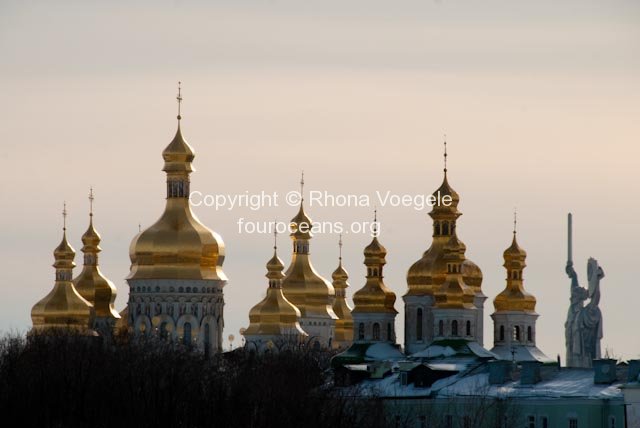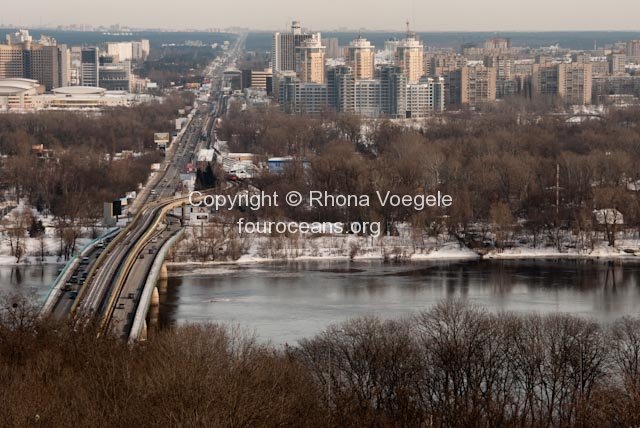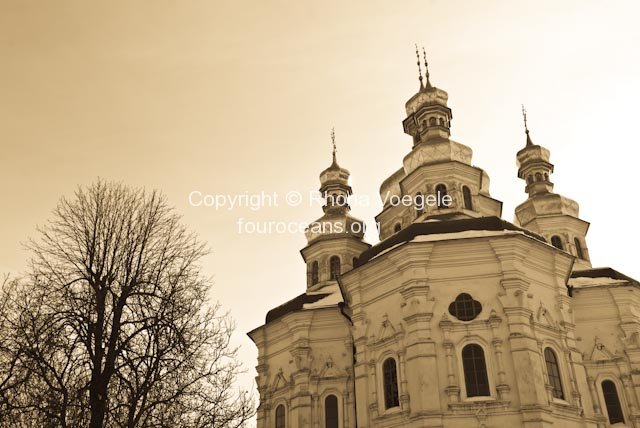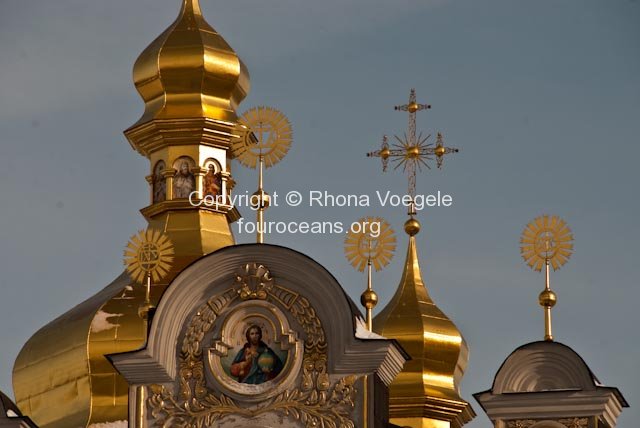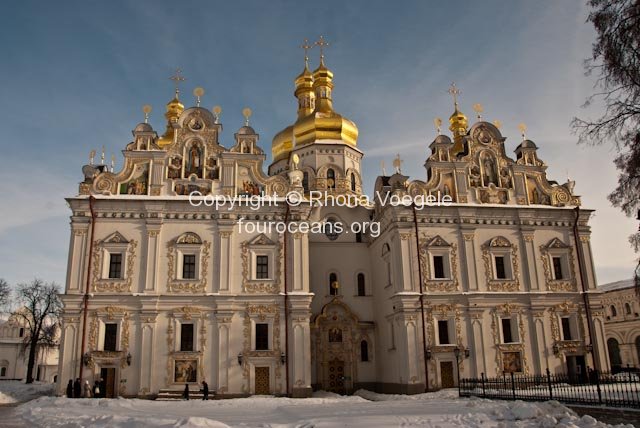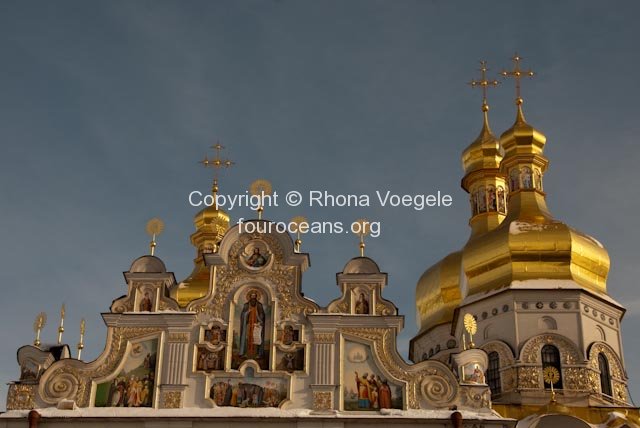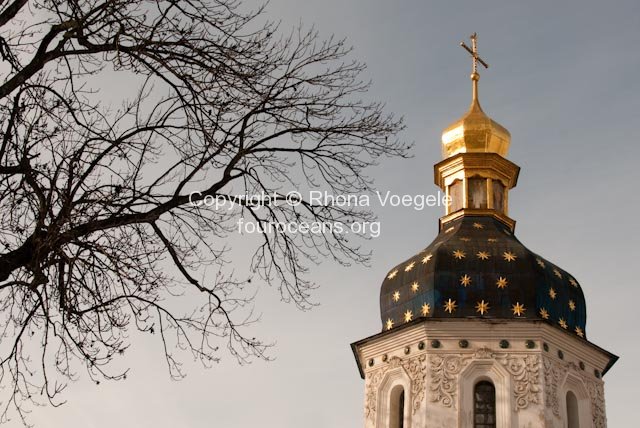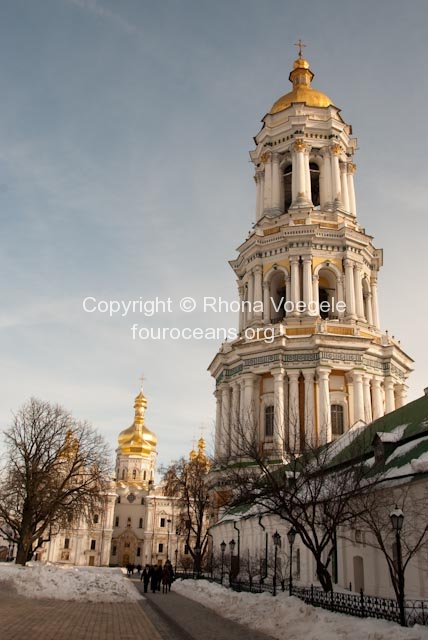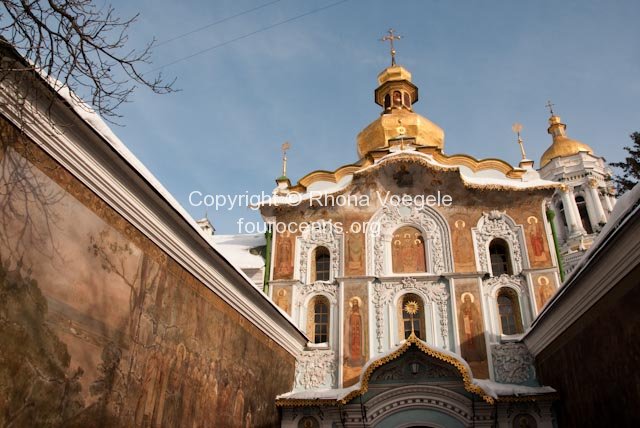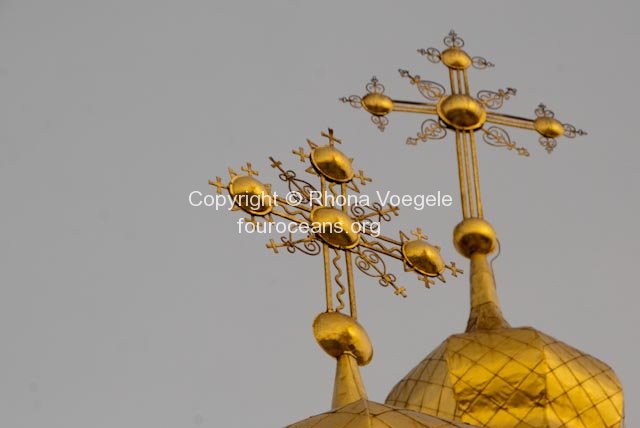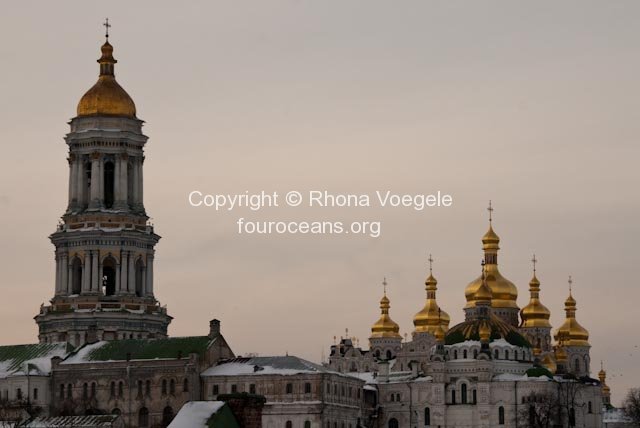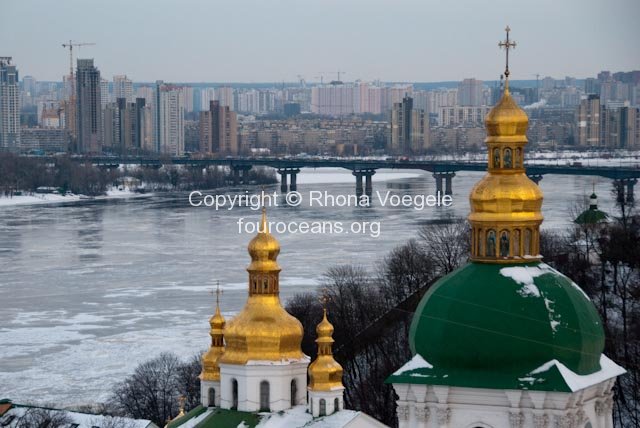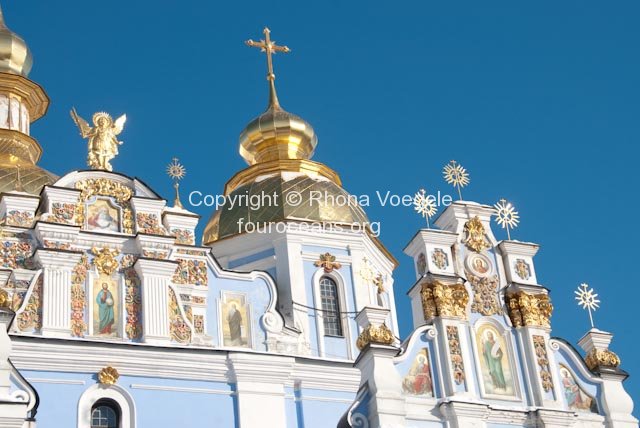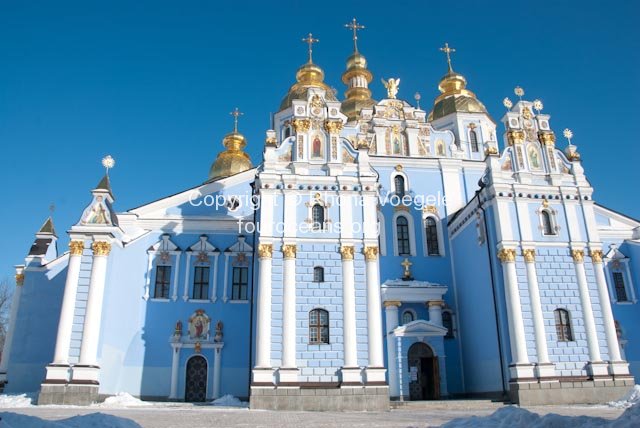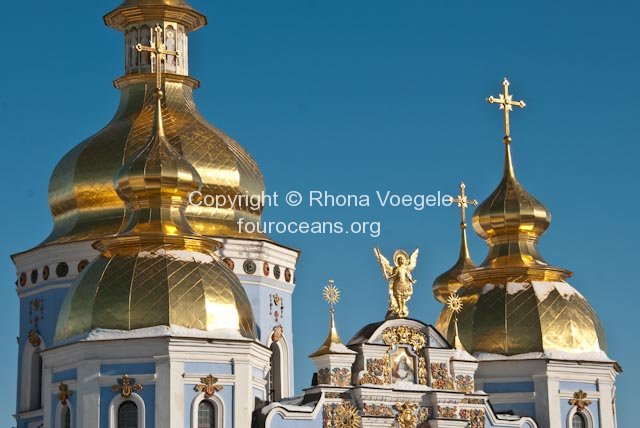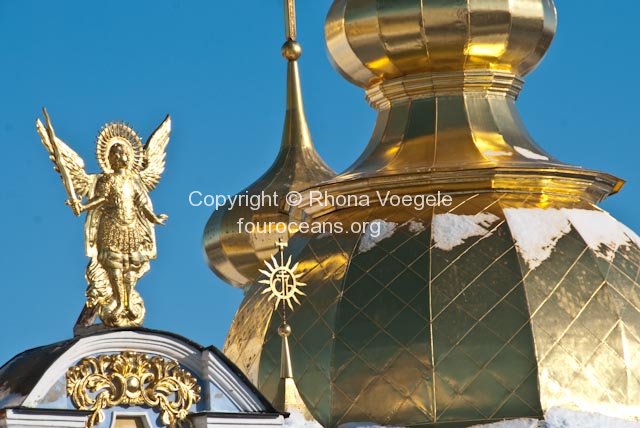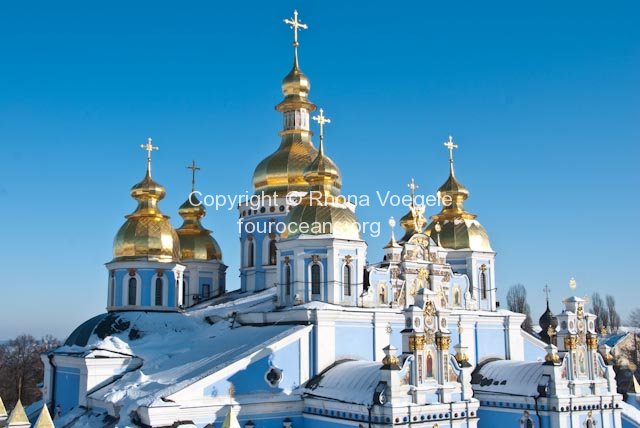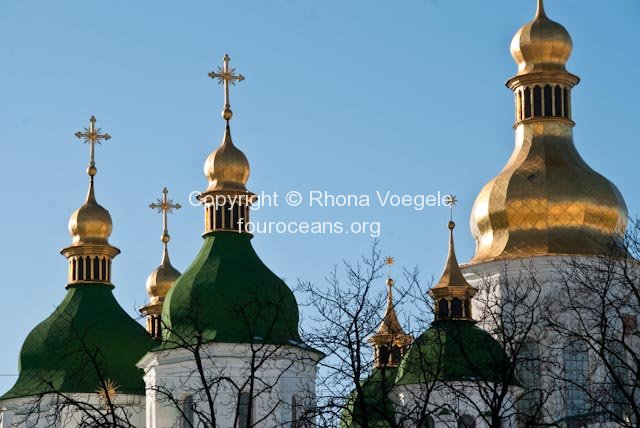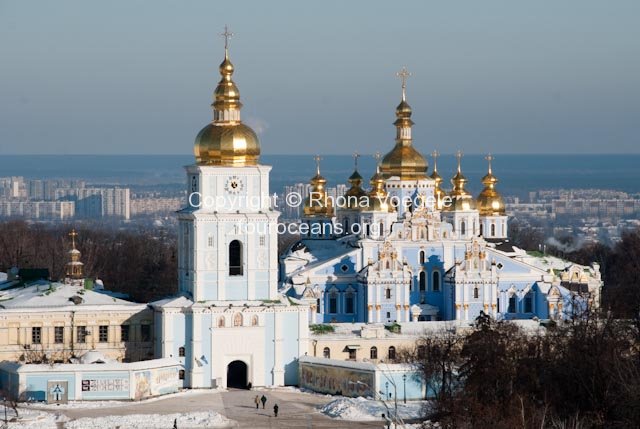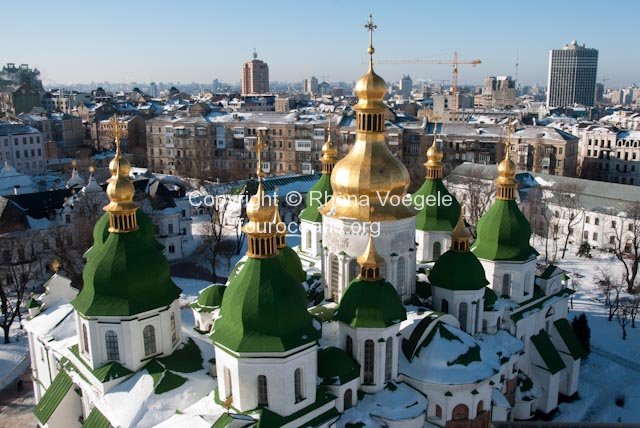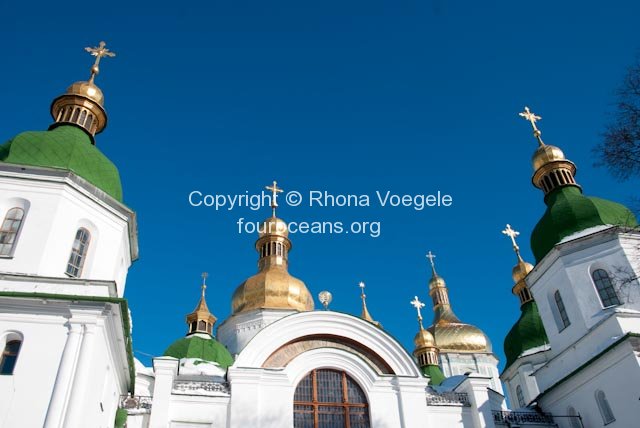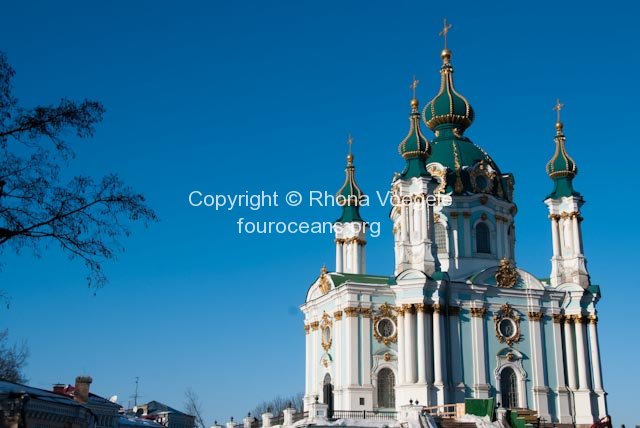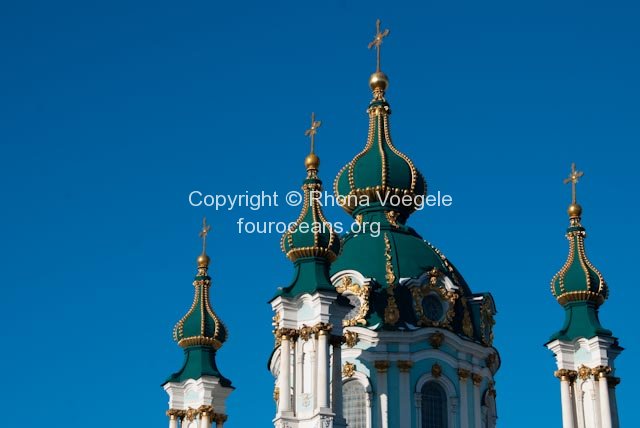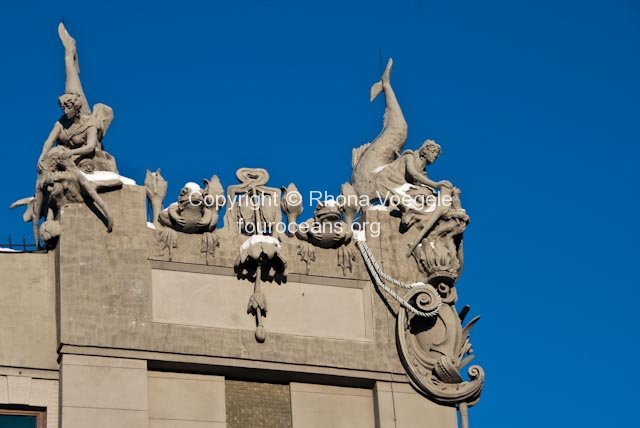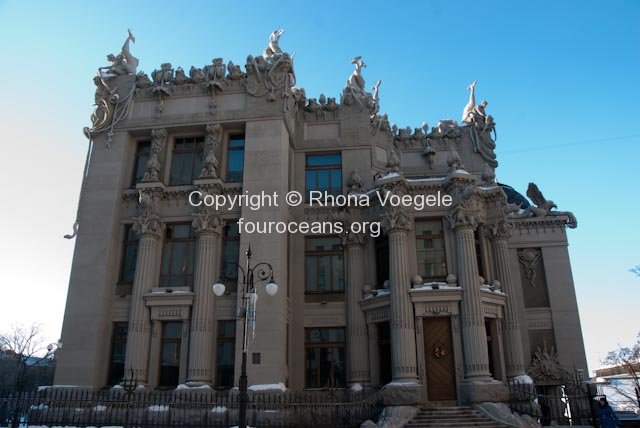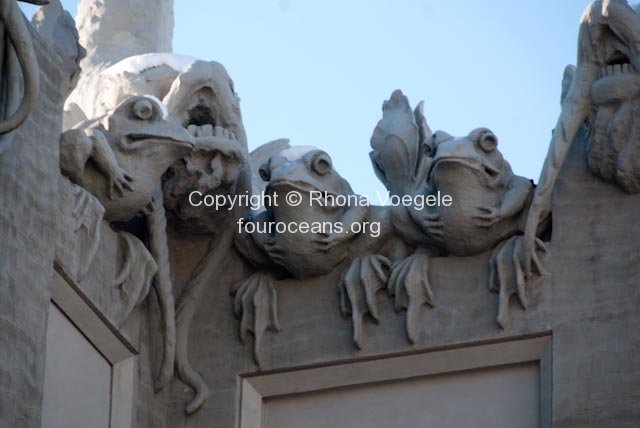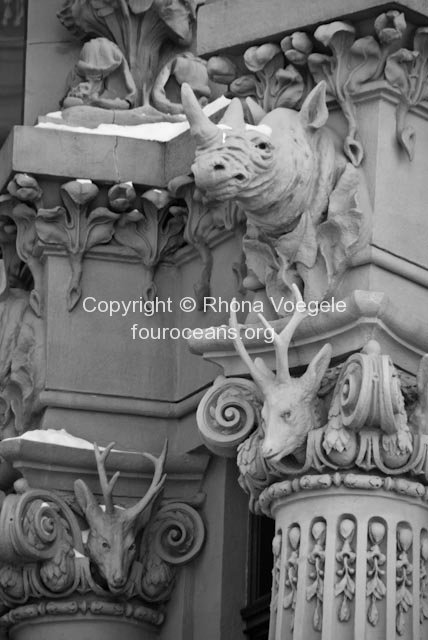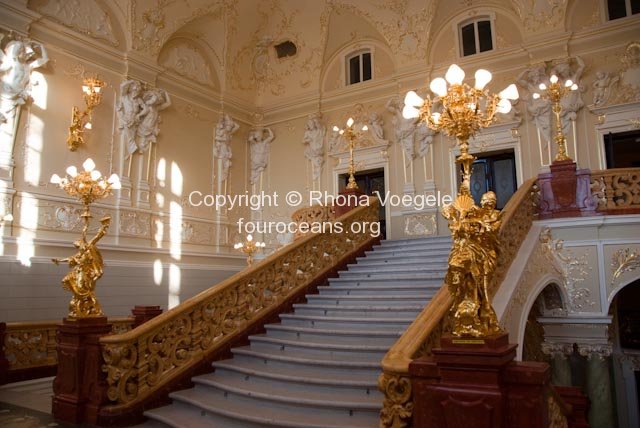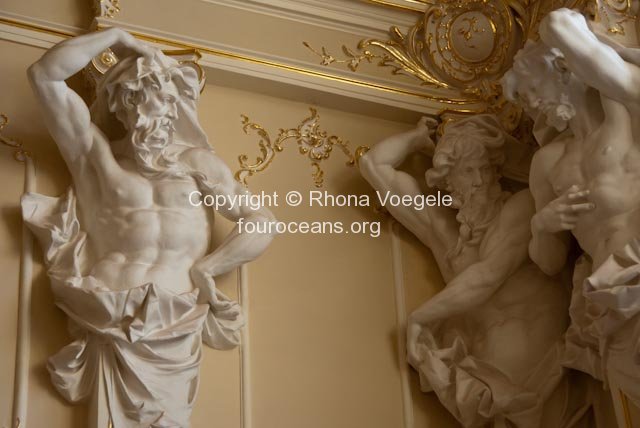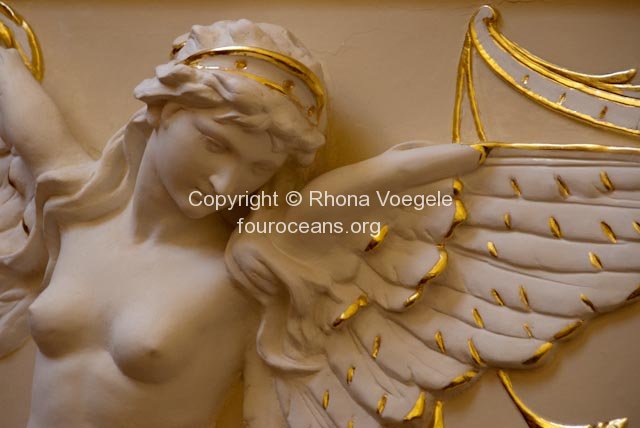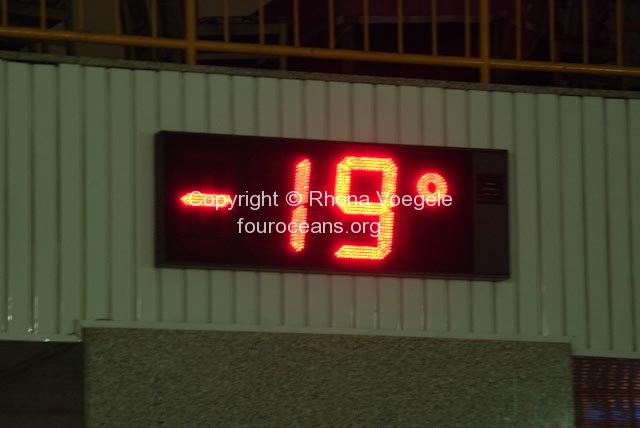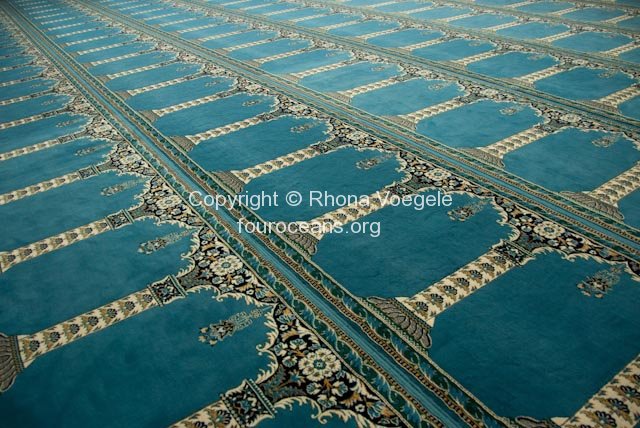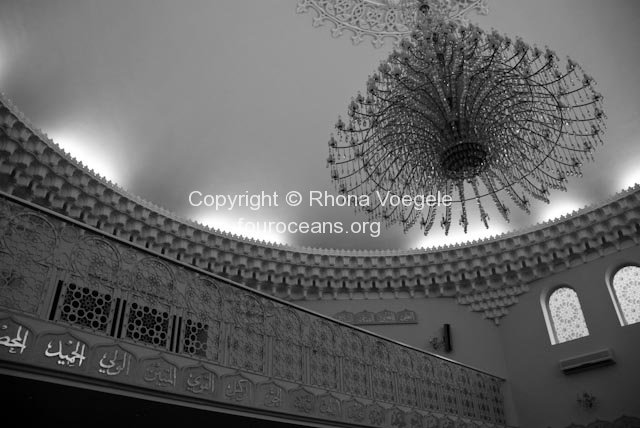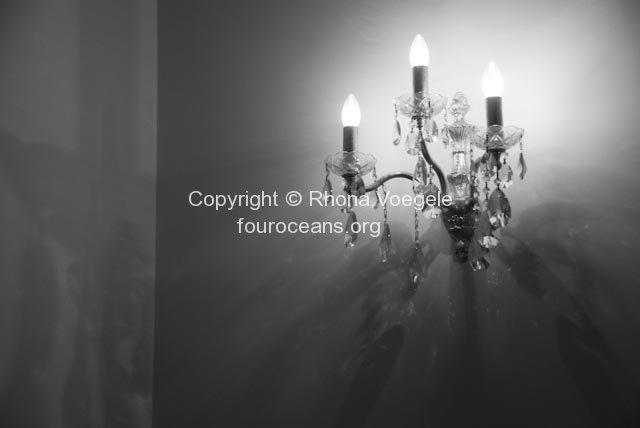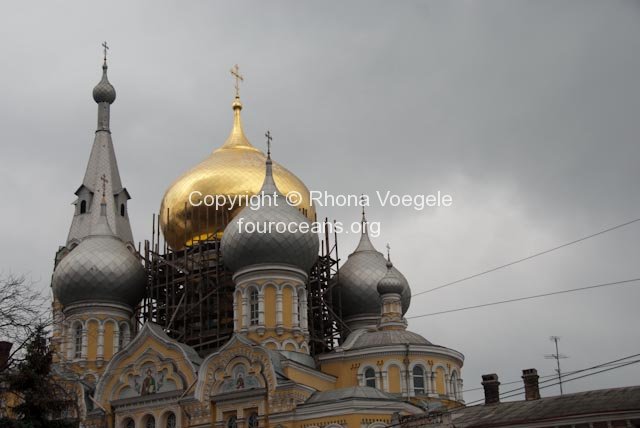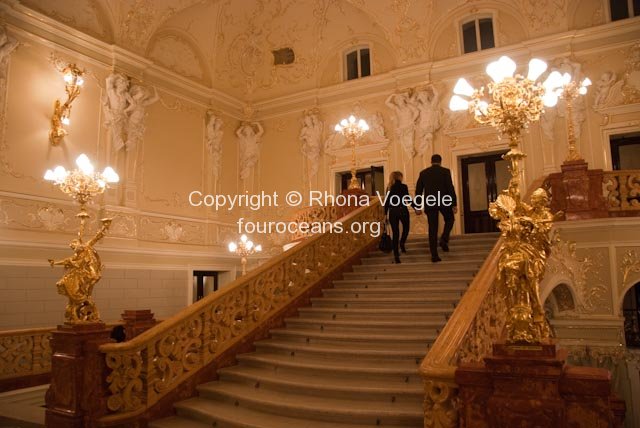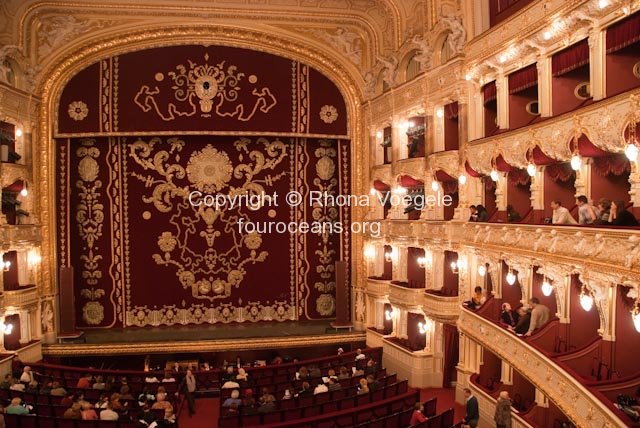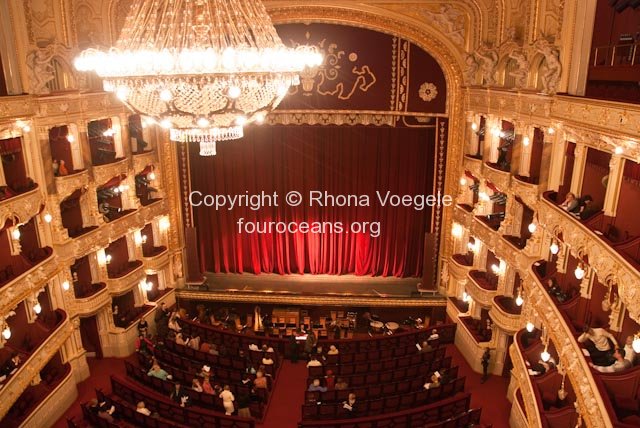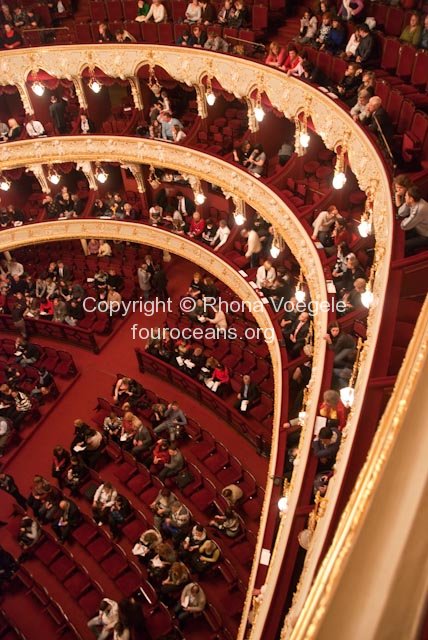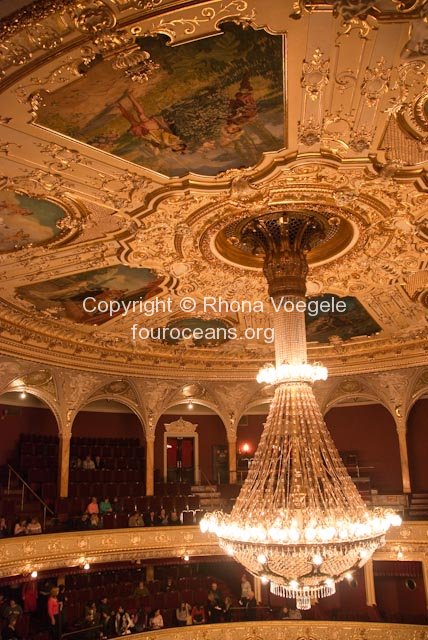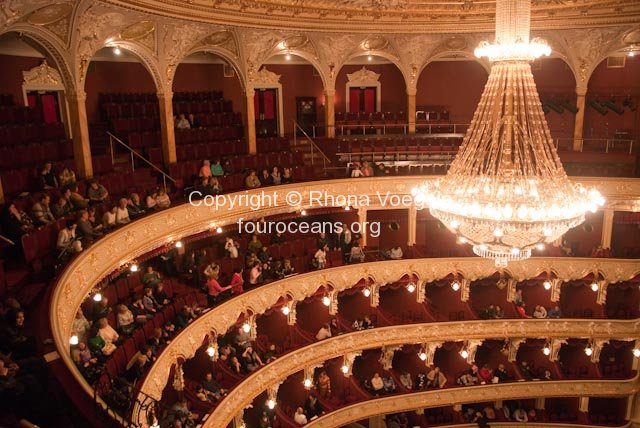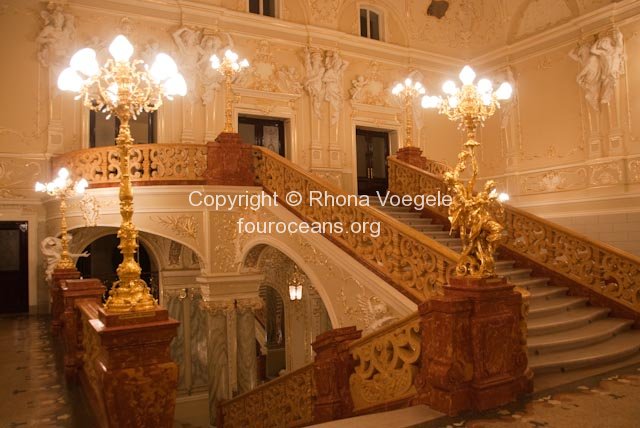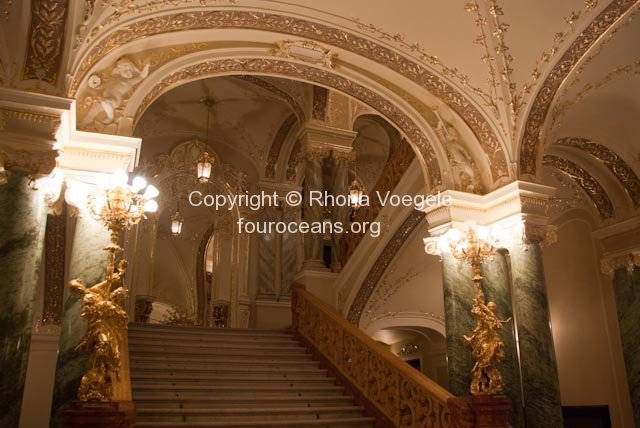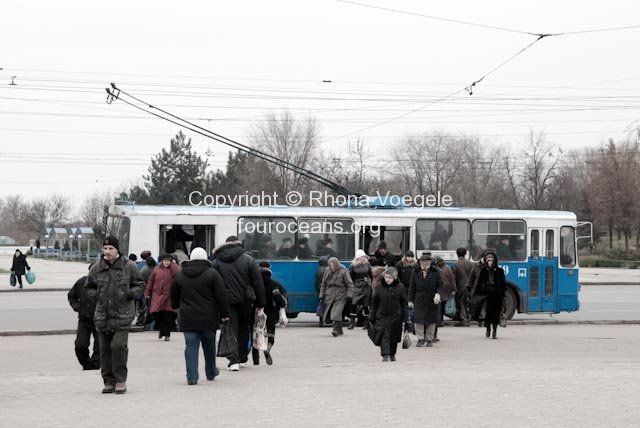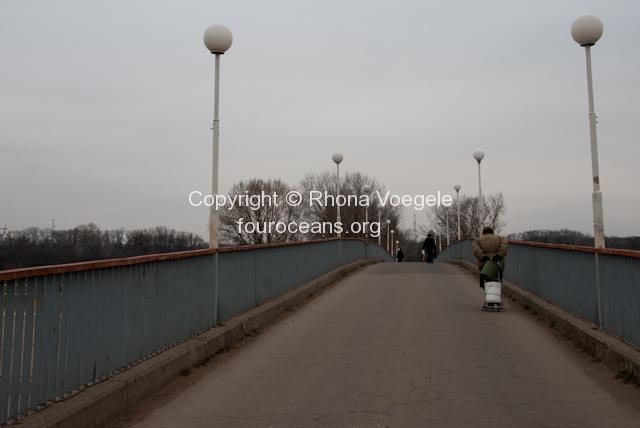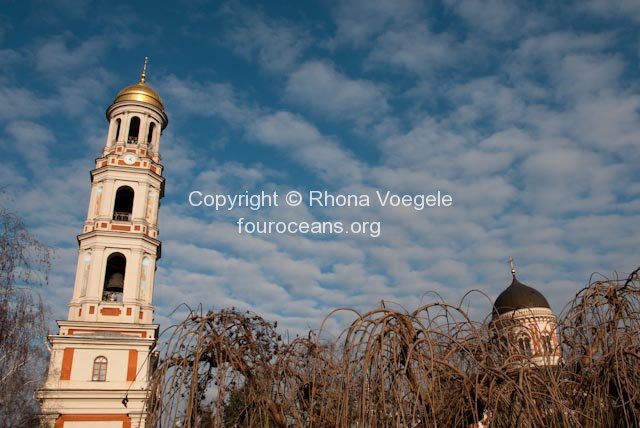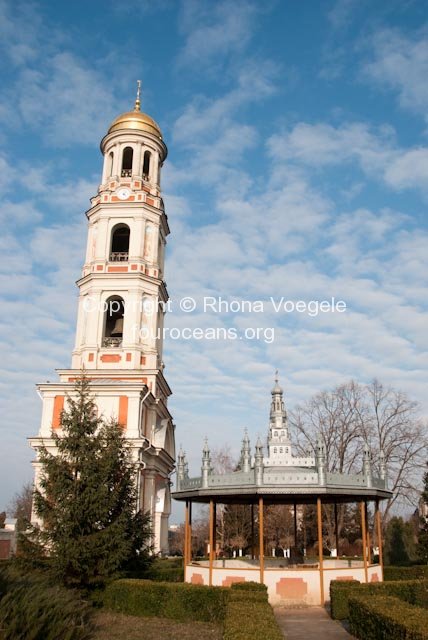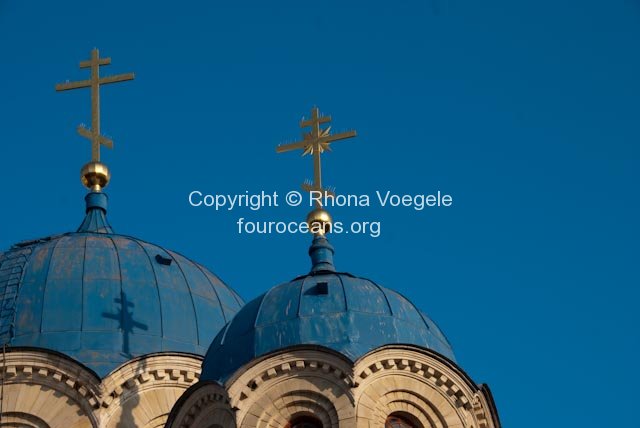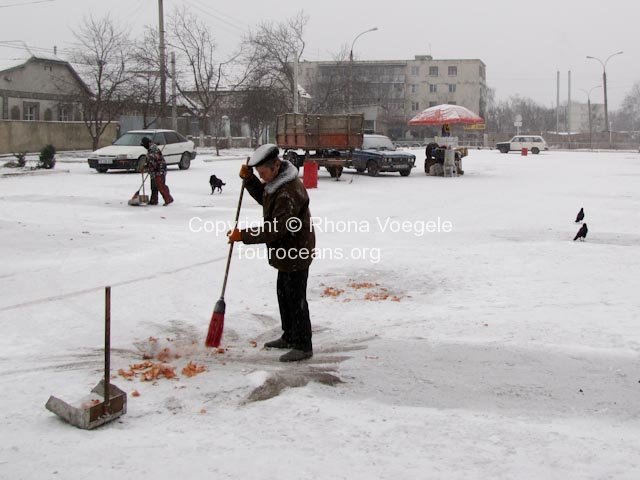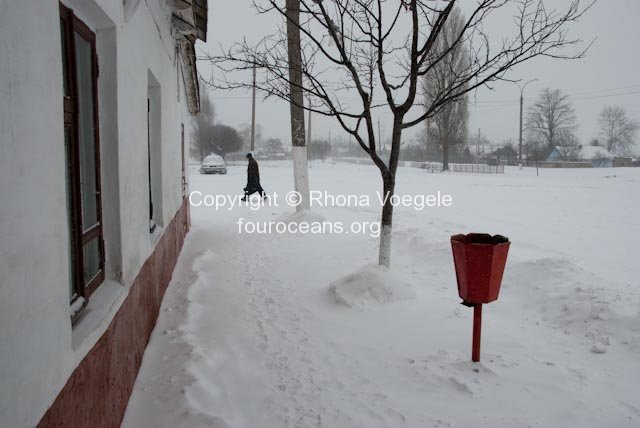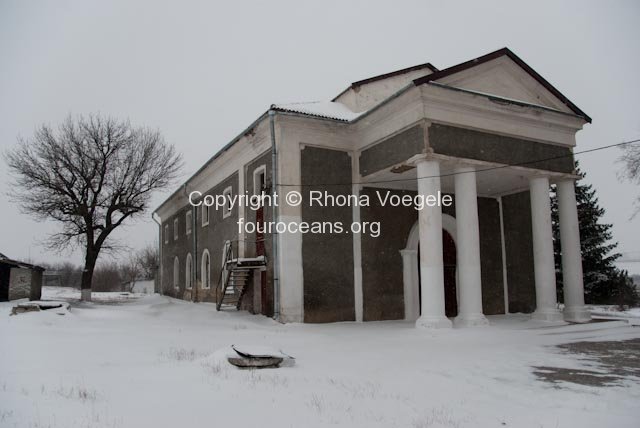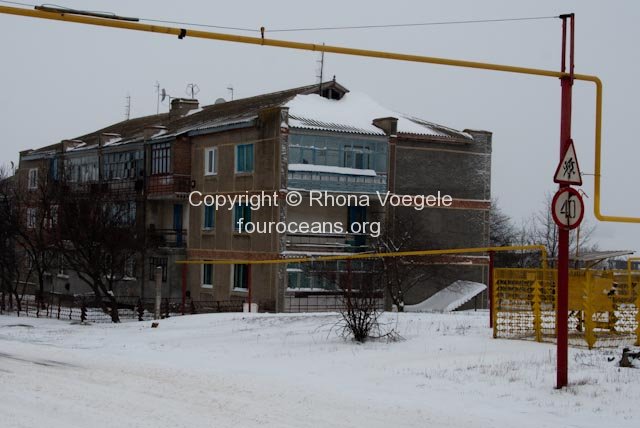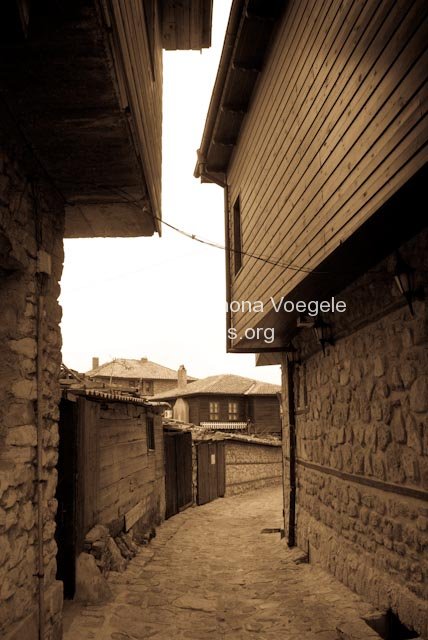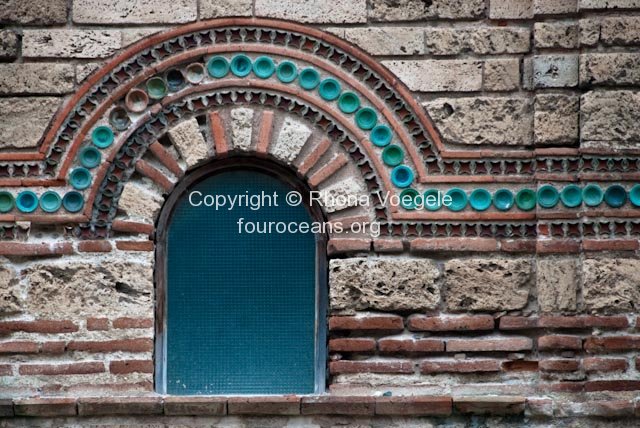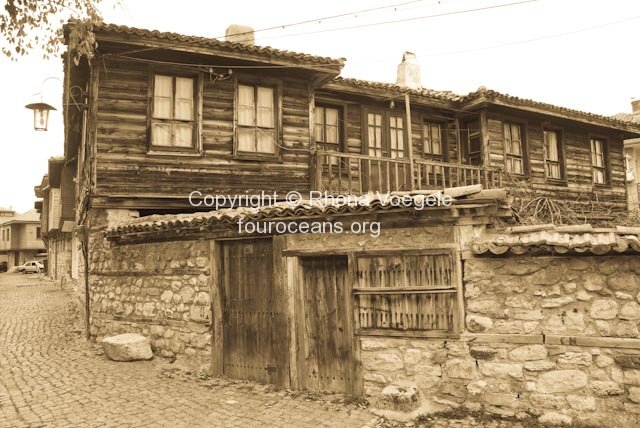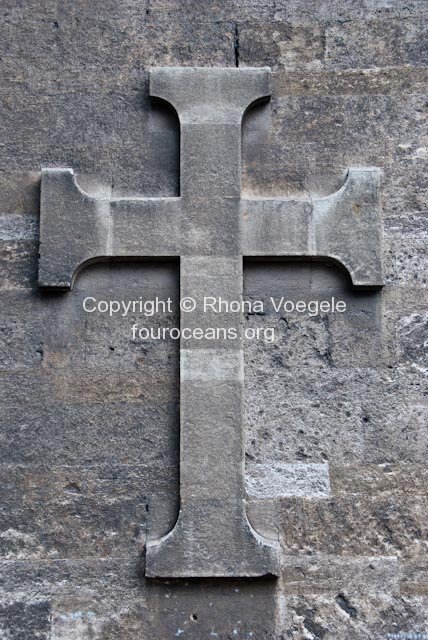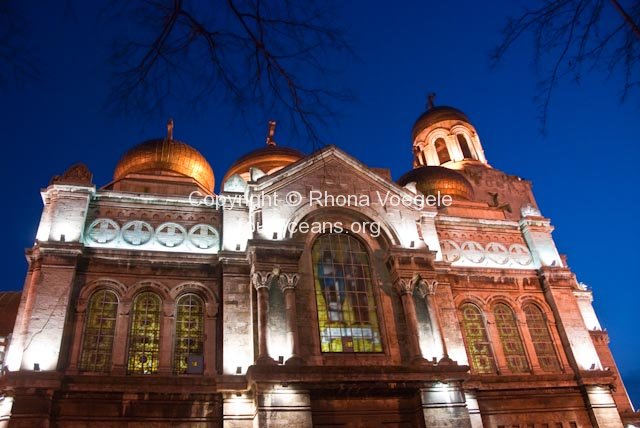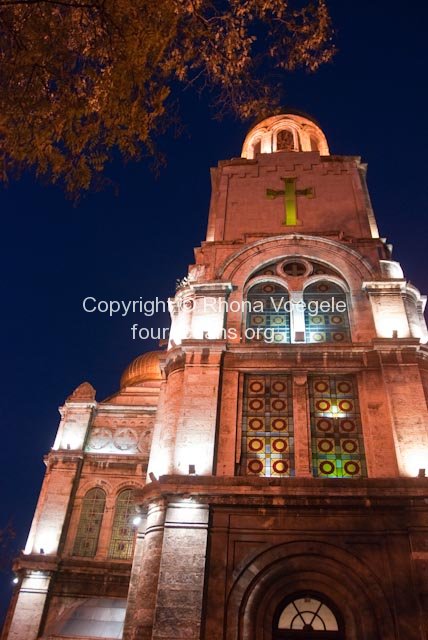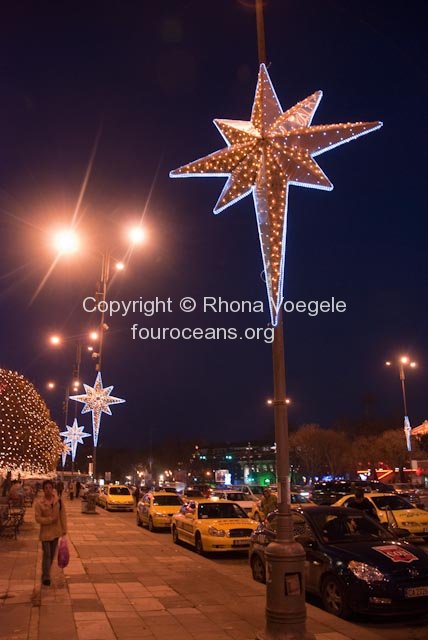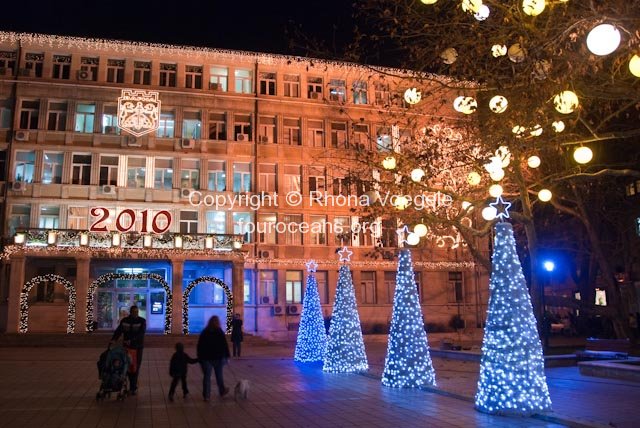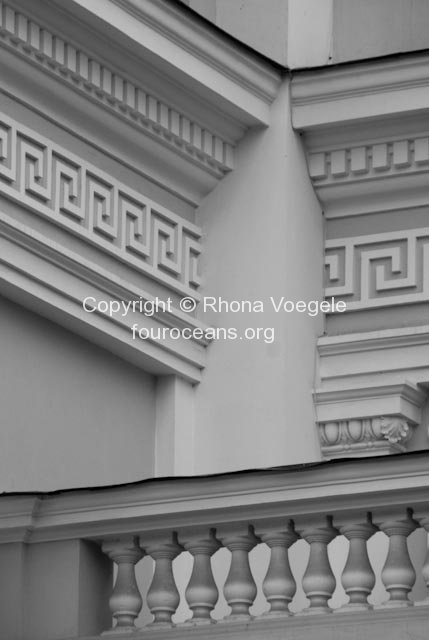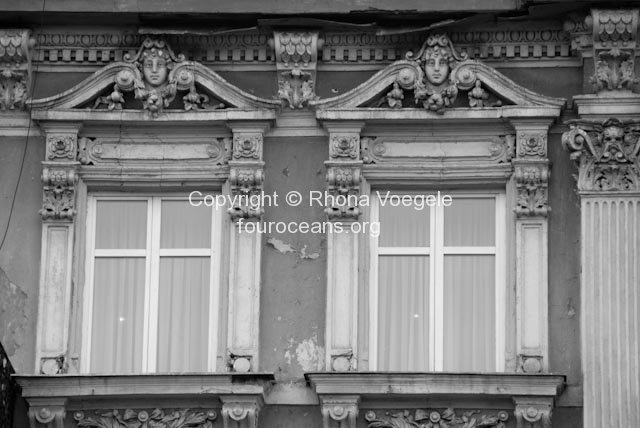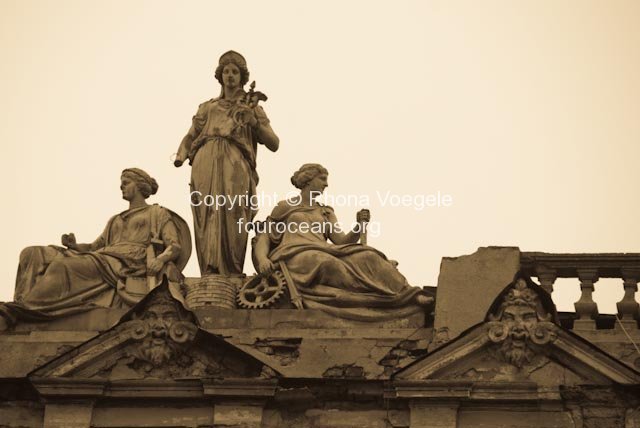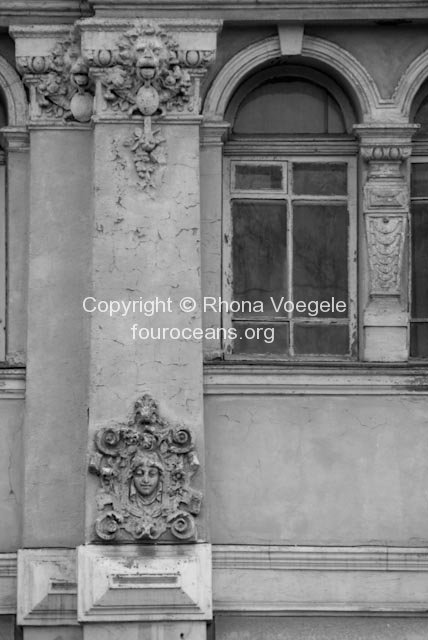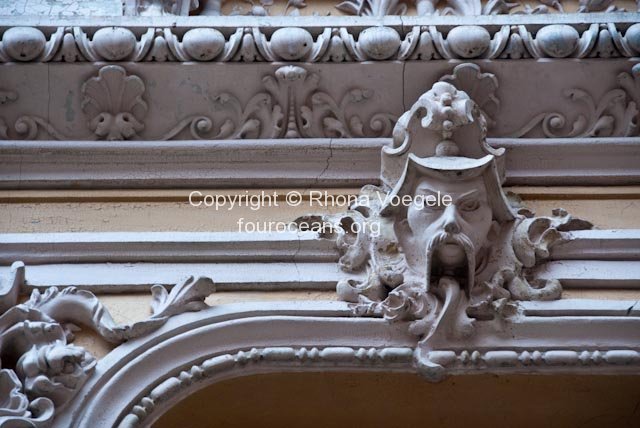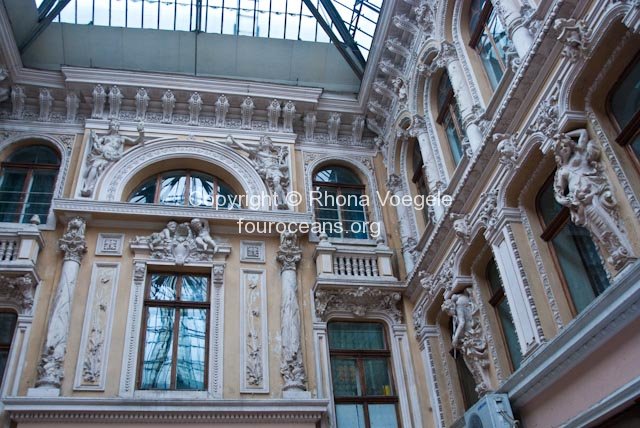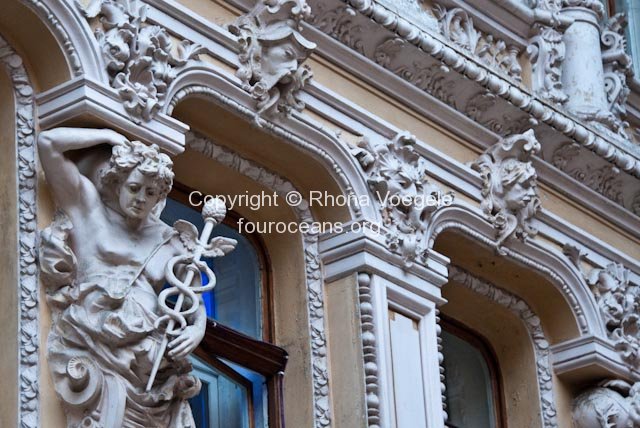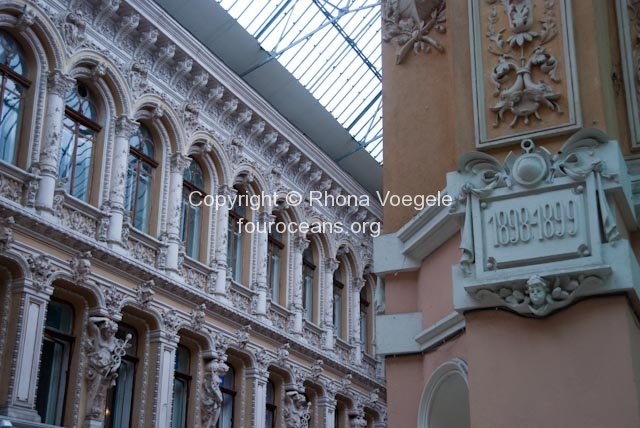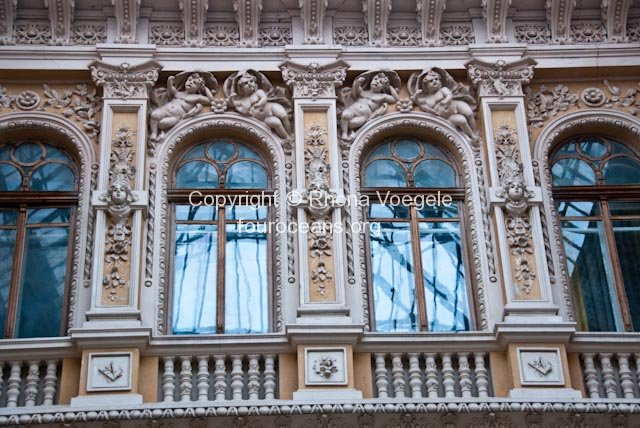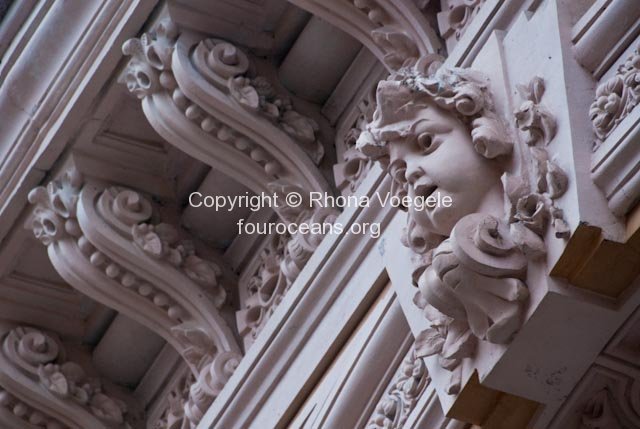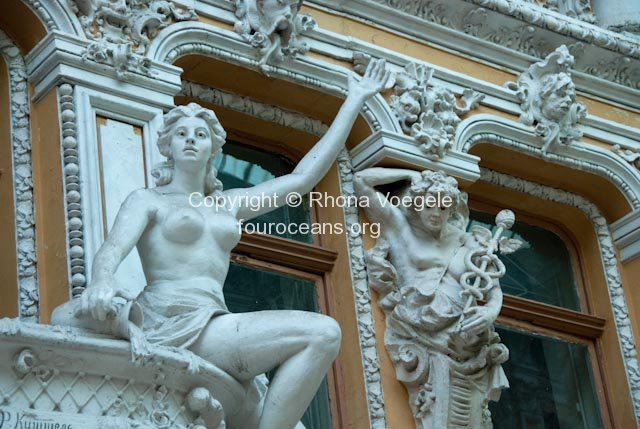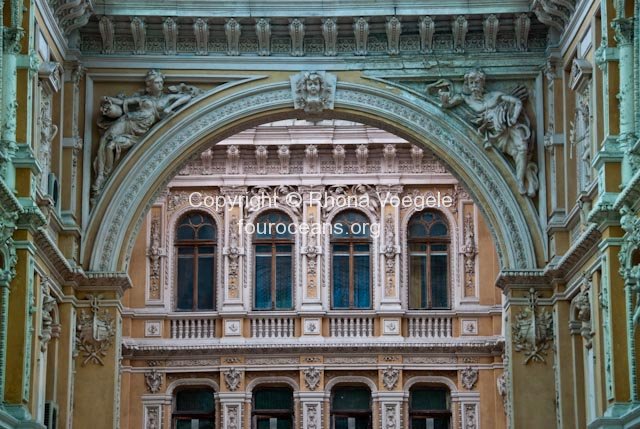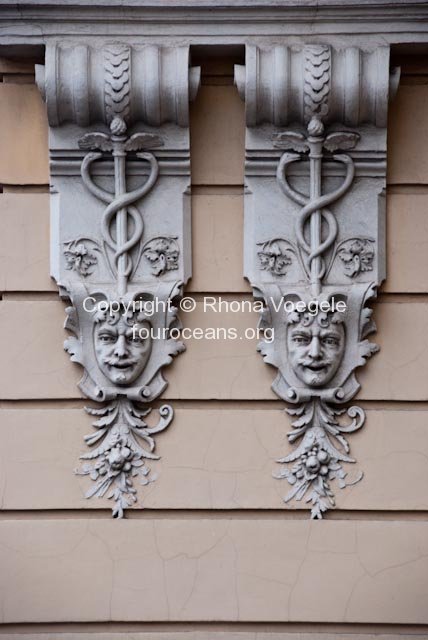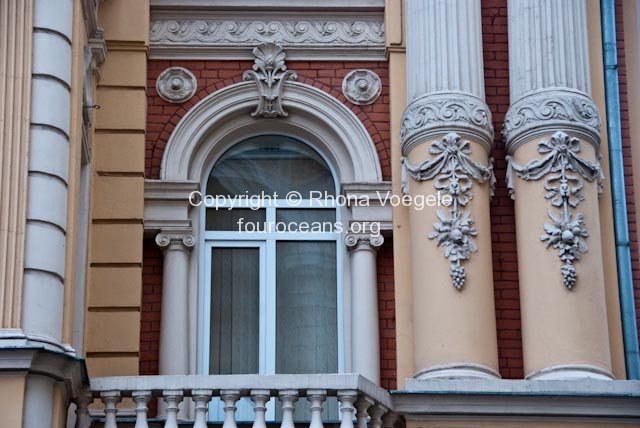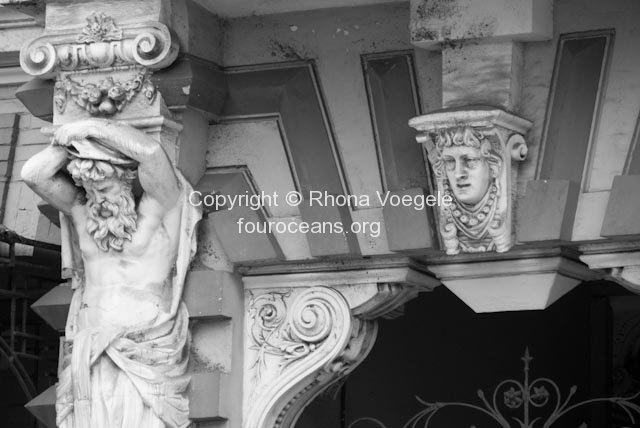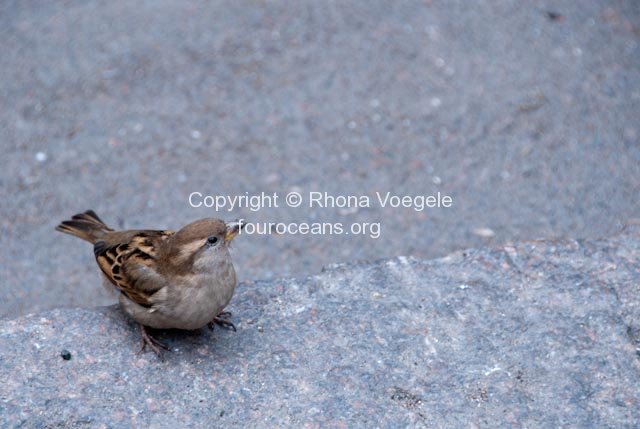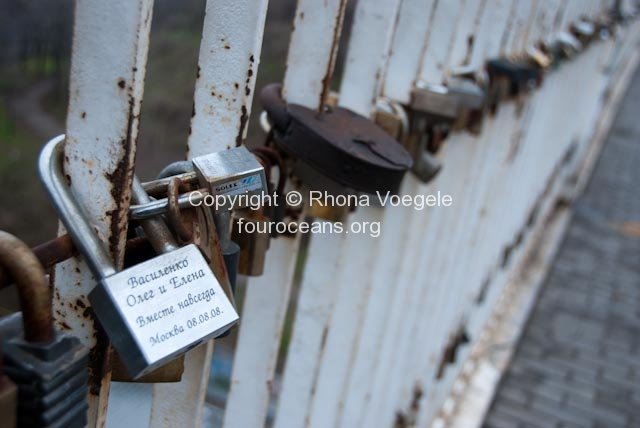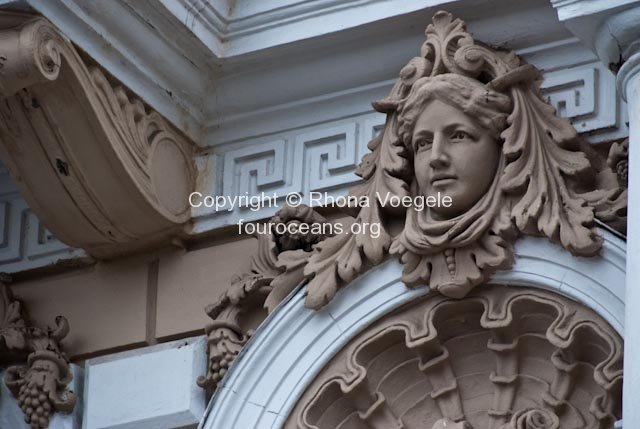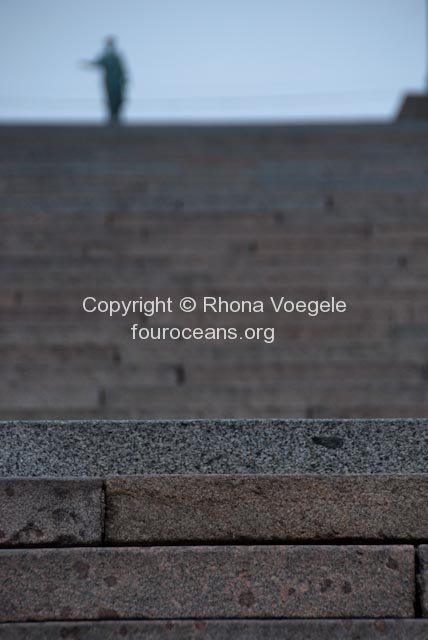–
–
Before we left Kyiv we had one major sight left to see: the Kyivo-Pechers’ka Lavra, a monastery complex that draws crowds of pilgrims and tourists. It was originally founded in 1051 by a Greek monk and his follower, who dug caves where they and other monks worshipped, studied and lived. Their mummies are still visible today, preserved by the cool dry air, and this is seen as proof that they were holy men. We visited the tunnels underground but weren’t allowed to see all of them as we weren’t pilgrims, to be fair all the mummies kind of looked the same to me. They were all covered with a shroud with only the odd hand or foot poking out. Up aboveground the monastery complex was huge, an incredible 28 hectares of churches, museums and other buildings. The massive Dormition Cathedral is a year 2000 reconstruction of the original which was blown up by either the Nazis or the Soviets (nobody is really sure).
One of the museums we went in to was the museum of micro miniatures which had exhibitions of such mind boggling smallness that it only took a single room to blow our minds and change our world view forever. Well maybe not quite that extreme but there was some seriously cool stuff, all viewed through a microscope. The pieces of art are the creation of a Russian artist, N Siadristy who does this stuff in his spare time. One of the pieces was a 2mm long strand of hair which had been hollowed out until it was almost transparent (?!). Not to stop at this he then created (by hand, this is all done by hand) a miniscule rose which he placed inside the hollowed out hair. Seriously! A chess board on the head of a pin was another creation and an intricate Egyptian scene complete with pyramids, a palm tree and a chariot all placed inside the eye of a needle. There were about 20 of these creations in an otherwise relatively non-descript room.
Read the rest of this entry »
Tags: Istanbul, Kyivo-Pechers’ka Lavra, micro miniatures, Odessa, winter
–
–
I guess it makes sense that a lazy week is followed by a busy one so here we go… The opera we saw at the Odessa Opera and Ballet theatre was Puccini’s La Boheme, a nice induction to the world of opera. The inside of the building was spectacularly stunningly amazingly beautiful and we went back the next night to watch a ballet (and take photos of the building). It was full of red velvet, gold paint, cherubs and renaissance paintings surrounding a massive chandelier in the main theatre room. We felt like real royalty sitting up in our own box (for the bargain price of $10 each).
On our last full day in Odessa we headed to the catacombs. In the 19th century a maze of tunnels were dug to supply limestone for a building boom in the city. There was no centralised plan and no map exists of the whole system, but it’s estimated that there are about 2,000-3,000km of tunnels ranging from 10m to 60m in depth. Apart from their initial use they have served other purposes through history. From 1819 to 1858 Odessa was a duty free port, a policy which made Odessa the third biggest city in Russia at the time. During this era smugglers would use the catacombs to smuggle goods bought at duty free prices out of the city. Later, during the Second World War resistance fighters hid in the catacombs after Odessa was occupied by the Romanian and Germany army following an impressive 73 day siege. After the war most of the entrances were sealed up to help stop crime.
From Odessa we headed to Tiraspol, capital of Transnistria. Though it declared independence from Moldova in 1990 it’s thus far unrecognised internationally except by Abkhazia and South Ossetia (which in turn are only recognised by each other and Transnistria). The reason for the split is a historical division in the country; Transnistria was part of the Russian Empire for much longer than the rest of Moldova and has much less Romanian influence. As the USSR started to crumble, nationalist Romanian oriented sentiment in Moldova soared and in 1989 Moldovan (a dialect of Romanian) was declared the only national language. For the mostly Russian speaking Transnistrians this and the prospect of Moldova reuniting with Romania caused skirmishes that led to an all out war in 1992. Since then a ceasefire and a large Russian presence has restricted the conflict to economic blockades and rhetoric. Transnistria has its own government, military, police, currency, postal system, constitution, flag, national anthem, passports and coat of arms. However, the currency can’t be exchanged anywhere outside Transnistria, the stamps are for domestic use only and citizens who travel abroad use a Moldovan passport.
Read the rest of this entry »
Tags: Chisinau, Dubasari, Glinnoye, Gluckstal, Moldova, Odessa, Tiraspol, Transdniester, Transnistria, Ukraine
–
–
This week has been uncharacteristically lazy. We’ve spent quite a few days lazing about in hotel rooms, sleeping late and not achieving much at all. It’s been really nice! Sometimes you need those days and we haven’t taken many yet this trip, the weather has been so fantastic and there’s been so much to see that we haven’t slowed down. When we got to Nesebar the weather had changed to winter and to be honest there wasn’t much to see once we’d done the short wander around the small old town. The isthmus that the old town is on was almost deserted in the winter season, pretty much all the churches, shops, restaurants and even Tourist Information were closed. All that remained of the summer tan-seeking throng was a few chilly postcard sellers, construction workers preparing for next year’s rush and a taxi driver who was so desperate for business that he promised to take us anywhere we wanted to go for bus fare prices. We ended up paying him a bit more than bus fare price for the trip to Varna (1.5 hours) and he was the most excited and happy taxi driver I think I’ve ever met. Our measly 30 leva (USD25) fare won’t go far toward the 1,000 leva he pays monthly to rent the car but it’ll help.
Varna is also on the coast but being a big city (3rd largest in Bulgaria) most sun seekers head to one of the smaller resorts nearby (when they come in summer). We got in on a Saturday and the next bus up to Odessa, Ukraine, wasn’t until Tuesday afternoon. Once we’d wandered the beachfront, been to the cathedral, seen the Roman baths and wandered the streets a bit we spent the rest of the time hanging out and doing mundane life stuff like laundry, catching up on emails and watching lots of interesting shows on the History Channel. Did you know that in WW2 homing pigeons were actually a really important means of communication for both the Allies and the Axis? So important that both sides trained peregrine falcons to take out enemy pigeons. The British actually trained their falcons to retrieve the Nazi pigeons instead of just killing them, with messages and markings intact, thereby enabling them to plant double agent pigeons behind Nazi lines. When the Nazis released these devious birds they returned to their roosts in the UK carrying important enemy intelligence. The things you learn when you can’t be bothered to leave the hotel room…
Read the rest of this entry »
Tags: Bulgaria, Nesebar, Odessa, Ukraine, Varna
